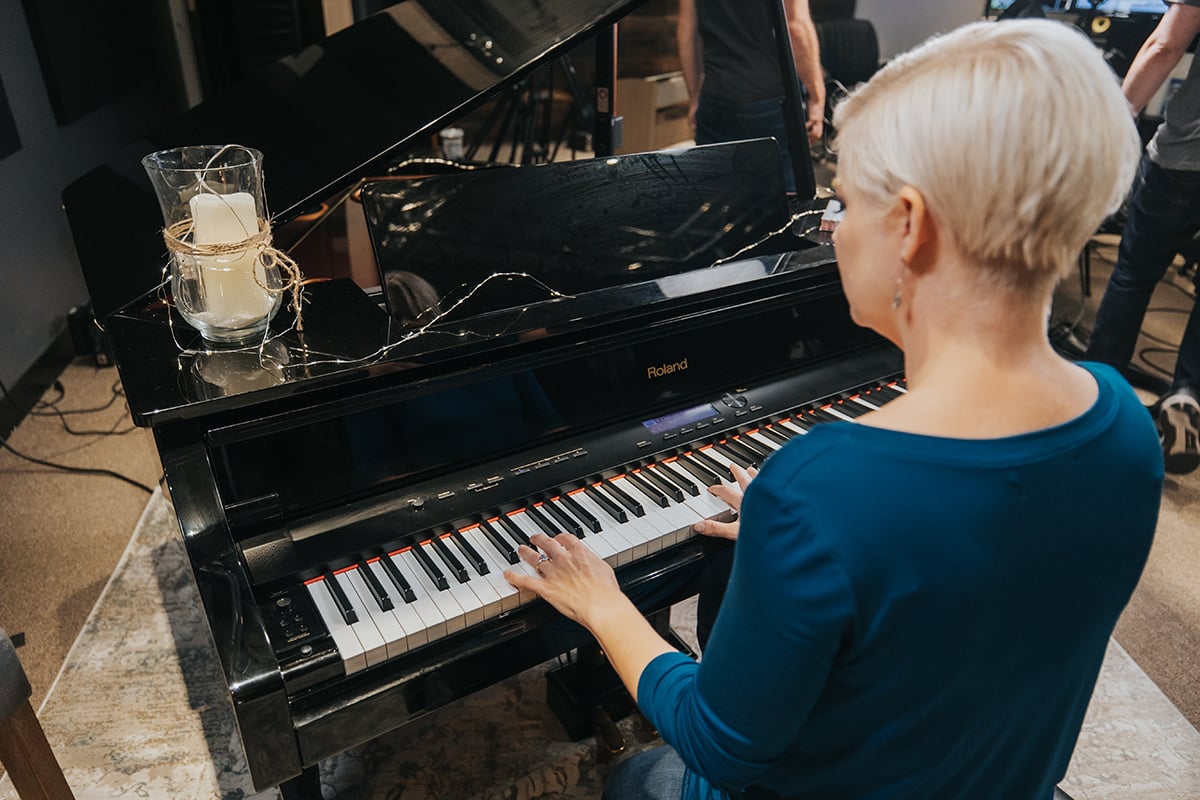I get asked this all the time:
“I can play chords, but I don’t know how what to do with my left hand to make it sound beautiful. What can I do?”
I’ve thought about this for a while before filming this lesson.
And the biggest piece of advice I have is this…
That’s right. Simple is best here.
I find it helps to think about it like this: Your left hand is like the bass player and the rhythm section of the band. Your right hand is like the singer and the guitars.
They both have their role to play, and if everyone is busy all the time, it just sounds messy and bad!
Think about it, if the drummer, bass player, guitarists, and singer were all performing a solo at the same time, it would sound awful!
So I have 3 things you can do with your left hand that will make your playing sound awesome, without making it too complicated.
The first one is the easiest.

For many people, our left hands are weaker. And while the right hand typically carries the melody on the piano, piano wouldn’t be the same without the left hand providing beautiful arpeggios and accompaniment patterns. Your left hand deserves more love, so check out the De-stupefy Your Left Hand course to give it the attention it needs! Free with your Pianote membership.
Just play single notes. That’s it, nothing fancy.
It’s a great way to start playing chords and songs because it allows you to explore more with the right hand, while your left hand is keeping time and adding a bit of bass.
It sounds nice, and it’s so easy. But of course it will get boring, so the next thing you can do is:
This is the one technique that I probably use the most when I play songs, especially to accompany myself.
You start with the single root note of the chord and then play a 5th above it. So if it’s a C chord, you’ll play C and G in the left hand.
If it’s an F chord, you’ll play F and C.
The great thing about this is that it doesn’t matter if the chords are major or minor because the root and 5th are the same for both. The left hand is the rhythm and bass, let the right hand determine the melody!
Another cool thing you can do with this technique is to try playing the 5ths as broken intervals. So instead of playing the C and G together, rock back and forth between them. It will make your playing sound instantly more complicated, and you can explore with rhythm to really make it sound fancy.
There’s one more technique I want to tell you about.
This one will give you that really nice booming bass sound. If you’re playing solo it’s excellent. If you’re playing with a bass player, you probably won’t need to use this one as much.
This is exactly the same concept as playing single notes, but instead of playing just one note, play it as an octave.
If you want to get a bit more sophisticated, you could include the 5th and play it as a broken chord, like an arpeggio.
So for C, you would play low C, G, and high C.
I love this one a lot because I think it adds a classical-type sound to the left hand. For slower ballads and songs it’s really beautiful!
So there are 3 things you can try today. Good luck, and have fun!
Lisa Witt has been teaching piano for more than 20 years and in that time has helped hundreds of students learn to play the songs they love. Lisa received classical piano training through the Royal Conservatory of Music, but she has since embraced popular music and playing by ear in order to accompany herself and others. Learn more about Lisa.
/marketing/pianote/promos/april/banner-bg-m.webp)
We use cookies for traffic data and advertising. Cookie Policy »
/marketing/pianote/promos/april/banner-title.webp)